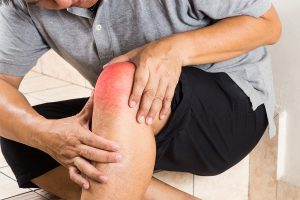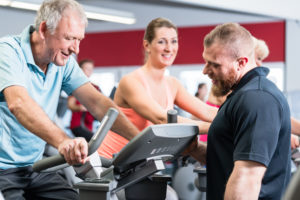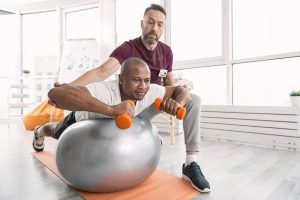What Is Pain?
Pain is an uncomfortable feeling that tells you something may be wrong. It can be steady, throbbing, stabbing, aching, pinching or described in many other ways. Sometimes it’s just a nuisance like a mild headache. Other times it can be debilitating.
Pain can bring about other physical symptoms, like nausea, dizziness, weakness or drowsiness. It can cause emotional effects like anger, depression, mood swings or irritability. Perhaps most significantly, it can change your lifestyle and impact your job, relationships and independence.
Pain is classified as either acute or chronic. Acute pain is usually severe and short-lived. Chronic pain is present for longer periods of time ranging from mild to severe and is often the result of a disease that may require ongoing treatment
Why Do People Feel Pain?
Everyone has felt the ache of a stubbed toe, the twinge of a pulled muscle or the throbbing of a bad headache but do you know why? The pain response we take for granted is actually a sophisticated and instantaneous chain reaction. Pain is the body’s way of letting you know that what you are doing is harmful, and that you need to stop.
The Pain Process
Pain starts at the source of injury or inflammation. The pain message, “Ouch! I’m hurt!” travels along the spinal cord from the injury directly to the brain where it registers the sensation known as pain. Your brain perceives that pain and sends the pain message back to the area of your body that is injured. This all goes very quickly. You don’t stub your toe and notice that it hurts five minutes later. You know right away.
Pain Relief from Meds
Acute pain, if not properly addressed, can become chronic. Chronic pain, persisting more than twelve weeks, is more difficult to treat. However most pain can successfully be treated by multi-modality or combined approach.
Milder pain, such as muscle aches or stiffness, may be relieved by over-the-counter medications such as Tylenol (acetaminophen). Nonsteroidal anti-inflammatory drugs (NSAIDs) such as aspirin, ibuprofen and naproxen also help with inflammation. Topical pain relievers such as creams, lotions or sprays help relieve pain and inflammation from sore muscles and arthritis.
For more difficult pain your doctor, or pain management specialist, may prescribe stronger medications such as muscle relaxants, anti-anxiety drugs (diazepam [Valium]), anti- depressants (duloxetine [Cymbalta] for musculoskeletal pain), prescription NSAIDs such as celecoxib (Celebrex).
A short course of stronger painkillers (such as codeine), fentanyl [Duragesic, Actiq], oxycodone and acetaminophen (Percocet, Roxicet, Tylox) or hydrocodone and acetaminophen (Lorcet, Lortab, and Vicodin) may be prescribed.
A limited number of steroid injections at the site of a joint problem can reduce swelling and inflammation. An epidural might be given for spinal stenosis or lower back pain.
Tai Chi And Yoga
For centuries, Tai Chi and Yoga have been believed to improve flexibility, circulation, strength, balance and overall well-being. Tai Chi, a low-impact, form of martial arts, has shown to help osteoarthritis pain, low back pain and osteoporosis. Yoga combines posture, breathing techniques and meditation to improve arthritis, fibromyalgia, migraines and low back pain.
Hypnotherapy
Hypnosis has been used for over 150 years to help manage pain. Hypnotherapists guide patients into an altered state of consciousness to help the patient focus attention to reduce pain.
Methods for hypnosis include:
- Imagery: Guiding the patient through imaginary mental images of sights, sounds, tastes, smells, and feelings can help shift attention away from the pain.
- Distraction: Distraction can help children, especially babies. Using colorful, moving objects or singing songs, telling stories, or looking at books or videos can distract preschoolers.
- Relaxation/guided imagery: Relaxation exercises such as deep breathing and stretching can often reduce discomfort.
Acupuncture
Acupuncture is thought to increase the release of endorphins, chemicals that block pain. Many acu-points are near nerves. When stimulated, these nerves cause a dull ache or feeling of fullness in the muscle. The muscle sends a message to the brain causing the release of endorphins that block the pain message to the brain.
Acupuncture may relieve headache, low back pain, menstrual cramps, carpal tunnel syndrome, tennis elbow, fibromyalgia, osteoarthritis (especially of the knee), and myofascial pain. Acupuncture also may be an acceptable alternative to or may be included as part of a comprehensive pain management program.
Pain Relief from Physical Therapy
Physical therapy is often one of the best choices you can make for long- term, chronic pain or an acute injury. Your doctor recommends physical therapy. It can make you stronger and help you move and feel better. Physical therapists are experts in treating pain and its source. They will treat those areas with certain exercises to ease pain and improve movement. If you are prescribed home exercises, do them!
- Warm-up, low-impact aerobic training: You might walk fast or use a stationary bike to warm up instead of running, before your strengthening exercises.
- Muscle strengthening exercises: You might use machines at your physical therapist’s office, resistance bands or your own body weight (lunges, squats and pushups) to strengthen core muscles (belly, glutes and back) as well as others.
- Stretching: You might do some gentle stretching after you are warmed up to improve flexibility.
In addition your therapist may utilize the following to aid in healing:
- Heat packs to warm muscles
- Ice packs to reduce inflammation
- Hands-on massage for sore or injured areas
- Transcutaneous electrical nerve stimulation (TENS) and ultrasound to block pain. A TENS device sends low-voltage electric current to the skin over the area of pain. Ultrasound sends sound waves to the painful area.
Will It Hurt?
Physical therapy shouldn’t hurt but it may be challenging and result in temporary soreness. But stick with it. You will reap the benefits.
AW Health Care can provide therapy in your home after a fall, injury or hospital stay.
CALL US! (314) 330-7992










Comments are closed.